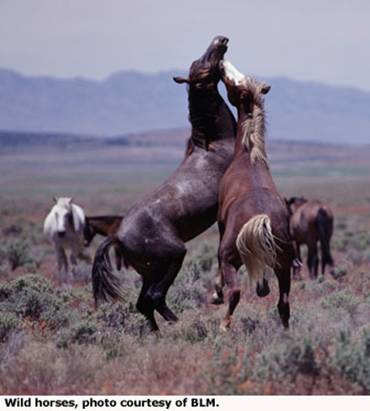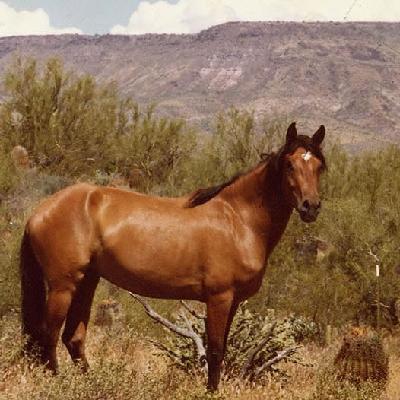|
Mustang
Mustang: The mustang is a descendant of the spanish horses brought to Mexico and Florida by the conquistadores in the 16th century. Most of these horses were of Andalusian, Arabian and Barb ancestry. Some of these horses escaped and established feral herds rapidly spreading throughout western North America.
Starting in the colonial era and continuing with the westward expansion of the 1800s, horses belonging to explorers, traders and settlers that escaped or were purposely released joined the gene pool of Spanish descended herds. By the 1900's North
America had an estimated two million free roaming horses.
Pure Spanish type horses remaining as a wild horse were thought to be lost but in recent years a few small herds have been found in very isolated areas. Through blood testing they were found to be strongly decended from Spanish breeding, among these are the Kiger and Cerat.
In 1971, the United States Congress recognized this wild horse as “living symbols of the historic and pioneer spirit of the West, which continue to contribute to the diversity of life forms within the Nation and enrich the lives of the American people.
”The Bureau of Land Management (BLM) is tasked with protecting, managing, and controlling wild horses and burros under the authority of the 1971 Wild Free Roaming Horses and Burros Act to ensure that healthy herds thrive on healthy rangelands and as multiple-use mission under the 1976 Federal Land Policy and Management Act. Under the 1971 Act, shooting or poisoning the feral horses in the wild is illegal, and doing so can be prosecuted as a criminal felony.
Wild Horse and Burro Quick Facts Article by: Tom Gorey, BLM Public Affairs Updated as of September 23, 2011
Wild Horse and Burro Population The Bureau of Land Management estimates that approximately 38,500 wild horses and burros (about 33,000 horses and 5,500 burros) are roaming on BLM-managed rangelands in 10 Western states based on the latest data available, compiled as of February 28, 2011. Wild horses and burros have virtually no natural predators and their herd sizes can double about every four years. As a result, the agency must remove thousands of animals from the range each year to control herd sizes. The estimated current free-roaming population exceeds by nearly 12,000 the number that the BLM has determined can exist in balance with other public rangeland resources and uses. The appropriate management level is approximately 26,600. Off the range, there are more than 41,000 other wild horses and burros that are fed and cared for at short-term corrals and long-term pastures. (As of August 2011, there were approximately 11,500 in corrals and 30,200 in Midwestern pastures.) All wild horses and burros in holding, like those roaming the public rangelands, are protected by the BLM under the 1971 Wild Free-Roaming Horses and Burros Act.
|


